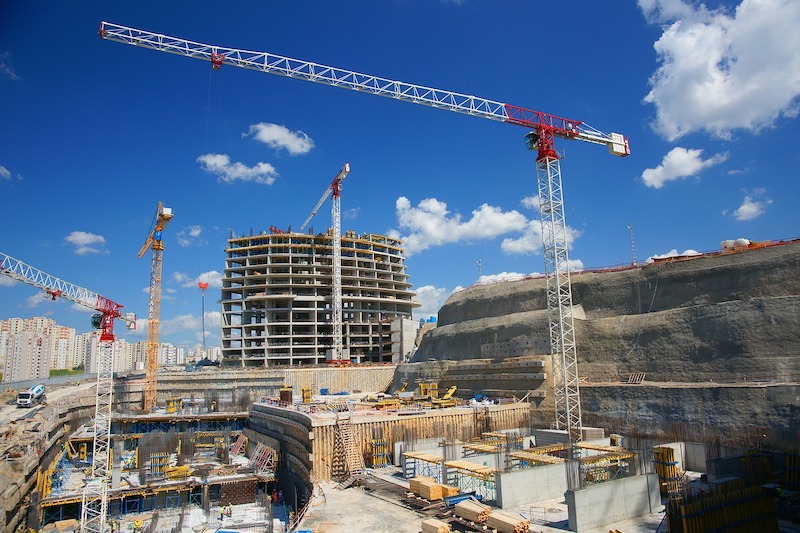Low- and no-cost measures can significantly reduce embodied carbon in mid-rise commercial office, multifamily, and tilt-up-style buildings, according to Rocky Mountain Institute.
Whole-building design, material substitution, and specification strategies can chop embodied carbon by 24% to 46% in those building types at cost premiums of less than 1%, the Institute says. A recent report by the Institute focused on carbon embodied in structural elements, which accounts for about 80% of a structure’s embodied carbon.
Whole-building design can have the biggest impact on embodied carbon, the report says. Material substitution and specification can also result in substantial embodied carbon savings, especially when targeting carbon-intensive materials such as concrete and steel.
A building’s structure and substructure typically make up the largest sources of up-front embodied carbon—as much as 80%. But the relatively rapid renovation cycle of building interiors associated with tenancy and turnover can account for a similar percentage of emissions over the lifetime of a building.
Related Stories
| Mar 1, 2012
Regulators investigate structural failures during construction of two Ohio casinos
Regulators with the Occupational Safety & Health Administration and the city of Cincinnati are investigatingthe collapse of the second floor of Cincinnati's Horseshoe Casino as workers were pouring concrete.
| Mar 1, 2012
Is your project too small for LEED? Consider other green standards
There are many other recognized national, state and local programs that offer a variety of best management practices and sustainable design, construction and operating strategies.
| Mar 1, 2012
California bill aims to cut costs for commercial building energy retrofits
A bill in the California Assembly would allow the state to pool together property owners’ energy-retrofit loans.
| Feb 29, 2012
Carvalho appointed Shawmut Safety Director
He has been a driving force behind multiple safety-orientated initiatives at Shawmut, including Safety Week, the creation of an online safety manual, and the implementation of a new safety reporting and tracking system.
| Feb 23, 2012
Federal budget cuts put major building projects on hold
A plan to build the National Bio and Agro-Defense Facility in Kansas is among several major building projects in jeopardy after the Obama administration’s 2013 budget was unveiled. The budget would cut all construction spending for the facility.
| Feb 23, 2012
Federal agencies fixed on leasing LEED-certified space
The federal government is especially focused on renting LEED-certified spaces.
| Feb 23, 2012
Regulators investigating construction accident at World Trade Center
The New York Port Authority and the city’s fire and building departments are investigating an accident at the World Trade Center construction site in lower Manhattan after a crane dropped steel beams that fell about 40 stories onto the truck that delivered them.
| Feb 23, 2012
New Virginia statewide building code goes into effect March 1
After March 1, all building plans in Virginia must adhere to the 2009 code that was adopted a year ago.
| Feb 23, 2012
Privatizing flood insurance could lead to new code requirements
One thing that could pave the way toward private flood insurance would be NFIP reforms, like requiring new construction in flood-prone areas to be elevated.
















